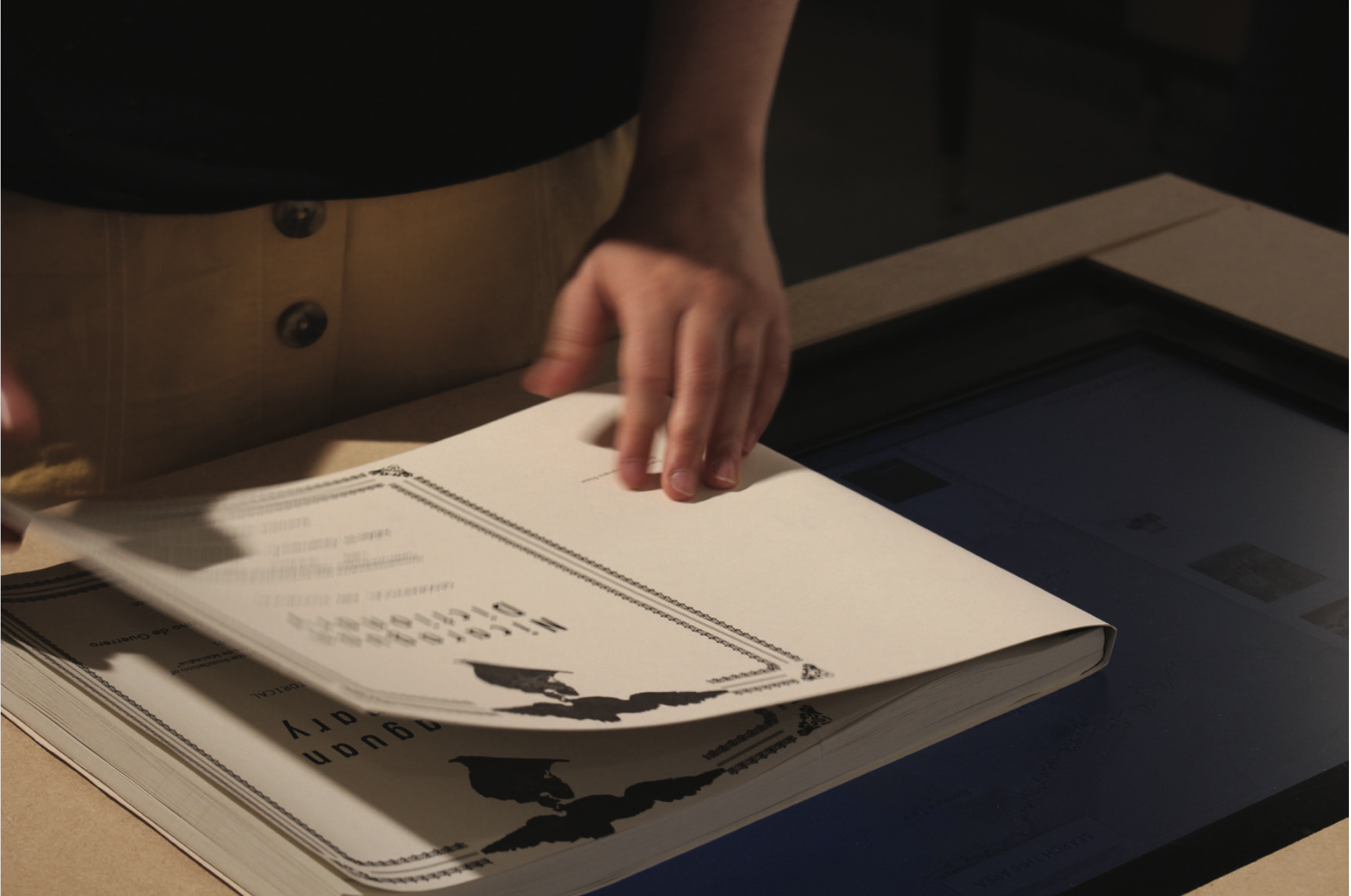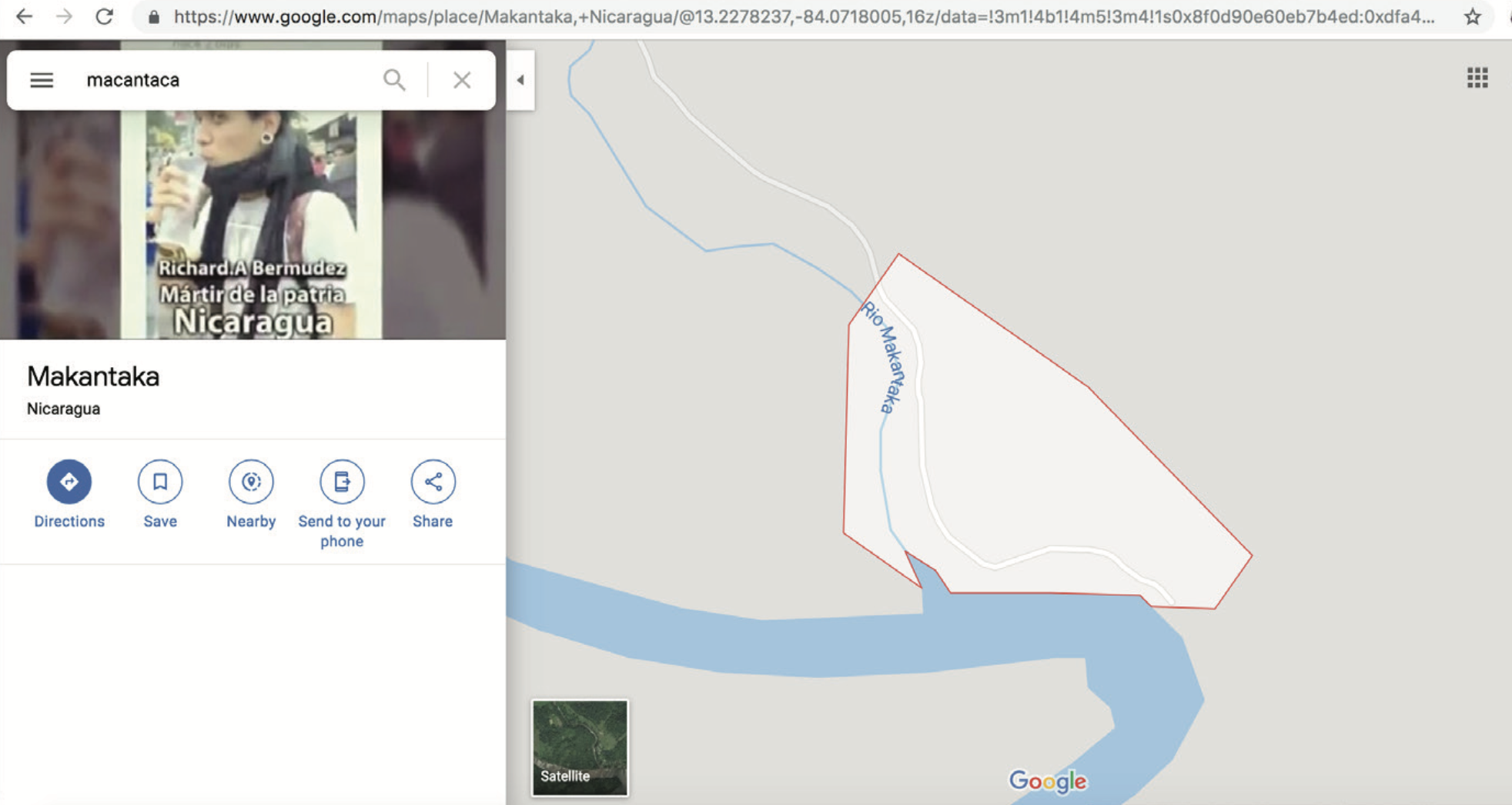



Dictionary of places translated
Londres, Reino Unido | 2019
El proyecto está compuesto por un libro de artista y un vídeo.
El libro de artista es una copia del Diccionario Nicaragüense Geográfico e Histórico, el cual se publicó por primera vez en 1939 y fue reimpreso en 1985. El nuevo libro contiene traducciones en inglés de la primera entrada de cada letra del alfabeto, entre las cuales se encuentran páginas blancas enumeradas o descripciones del contenido del libro original.
El vídeo registra la navegación en línea de los lugares del diccionario, llevado a cabo como parte del proceso de traducción.
Juntas, las dos piezas examinan los dintintos formatos donde existen los lugares y abordan cuestiones de interpretación, representación y traducción, así como las maneras en que estos formatos interactúan y se malentienden:
de lugar físico, a lugar escrito
de lugar físico, a lugar mapeado digitalmente
de un idioma a otro.
de lugar físico, a lugar mapeado digitalmente
de un idioma a otro.
-
Los diccionarios son un tipo de traducción - un texto que elabora sobre las palabras con el fin de hacerlas accesibles. ¿Qué significa entonces hacer un lugar accesible al escribirlo? ¿Quién los escribe, en qué idioma, para qué audiencia? ¿Es esta una apropiación del territorio?
El proyecto emplea la traducción como una manera de decontextualizar lo escrito, dando distancia para analizar la manera en que se adoptaron distintas palabras y tonos. Esto incluye contestaciones sobre topónimos locales deletreadas en inglés o español para afirmar el poder colonial dominante, así como dinámicas internas entre mestiz+s del pacífico y otros grupos del resto del país. Estas observaciones del lenguaje se anotaron en el borde izquierdo del libro, cambiando el formato físico de la pieza.
-El proyecto emplea la traducción como una manera de decontextualizar lo escrito, dando distancia para analizar la manera en que se adoptaron distintas palabras y tonos. Esto incluye contestaciones sobre topónimos locales deletreadas en inglés o español para afirmar el poder colonial dominante, así como dinámicas internas entre mestiz+s del pacífico y otros grupos del resto del país. Estas observaciones del lenguaje se anotaron en el borde izquierdo del libro, cambiando el formato físico de la pieza.
El vídeo se reproduce en bucle y navega los sitos del libro, mapeados y sin mapear.
Traducir el libro de 1985 ahora también implica recontextualizar. Algunos lugares han sido actualizados en google con imágenes y figuras de la aún presente crisis que comenzó en Abril del 2018.
London, United Kingdom | 2019
The project consists of an artist book and a film.
The artist book is a copy of the Geographical and Historical Nicaraguan Dictionary, first published in 1939 and reprinted in 1985. The new book contains English translations of the first entry for every letter in the alphabet. In between, blank pages are enumerated or describe the content of the original book.
The film records the online navigation of the places found in the dictionary, done as part of the translation process.
Together, the two pieces look at different formats in which places exist and address questions of interpretation, representation and translation, and the ways in which these interact and miscommunicate:
from physical place to written place
from physical place to digitally-mapped place,
from one language to another.
Dictionaries are a translation of sorts - a text that elaborates on words in order to make them accessible. What does it mean then to make a place accassible by writing it? Who writes it, in what language, and for which audience? Is this a claim to territory?
I used translation as a way of decontextualising the writing, giving distance to analyse the way in which different words and tones were adopted. This includes contestations over anglicised or spanish-spelled local toponyms to assert the dominant colonial power, as well as internal dynamics between mestiz+s of the pacific coast and other groups from the rest of the country. These observations of language and tone are annotated on the left border of the book, changing the physical format of the piece.
The film is played on loop, navigating the places of the book, mapped and unmapped online.
Translating the 1985 book now also implies recontextualising. Some places have been updated on google with images and figures of the ongoing crisis that started in April 2018.
Translating the 1985 book now also implies recontextualising. Some places have been updated on google with images and figures of the ongoing crisis that started in April 2018.